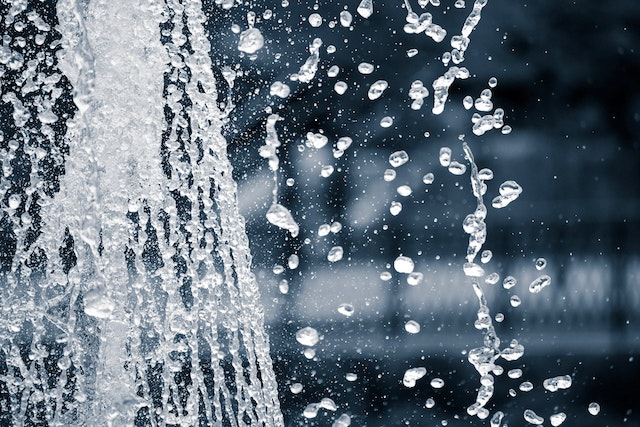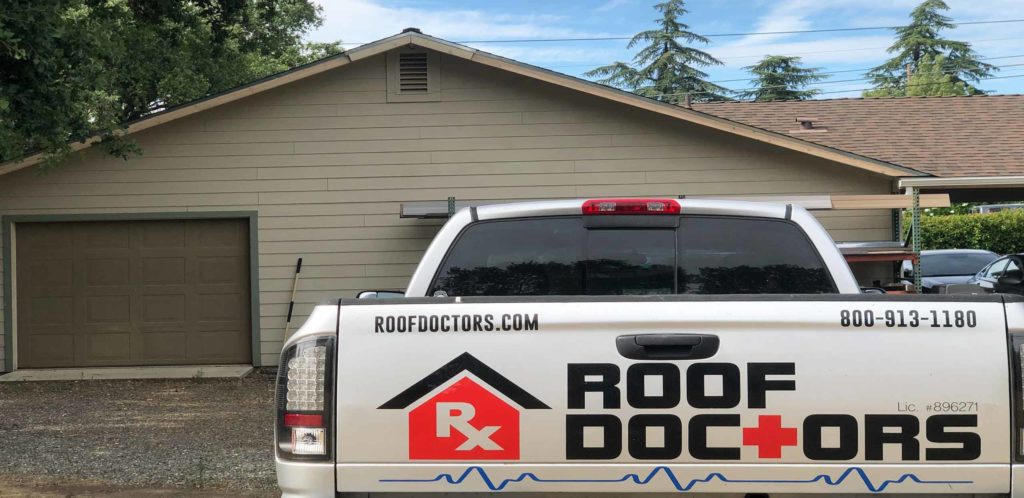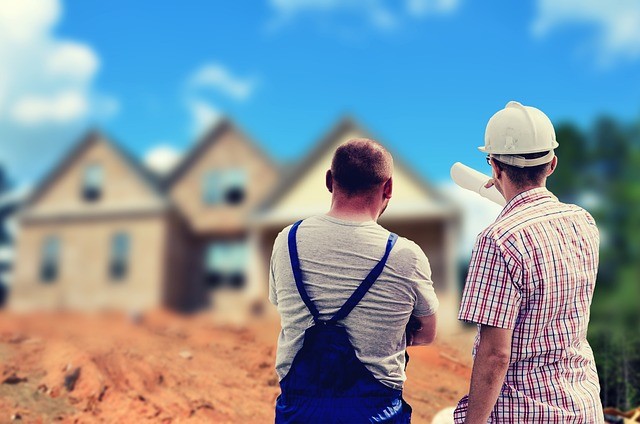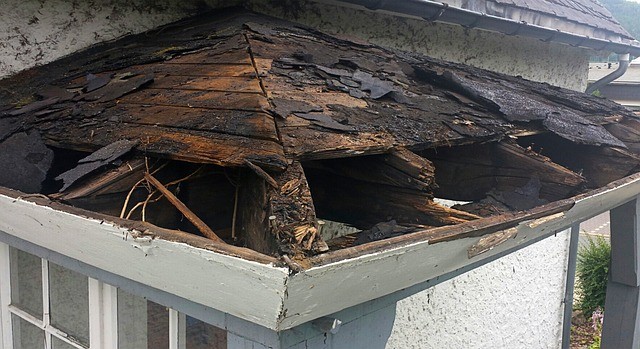So then, water is leaking into your home, making it cold and damp. Despite your best do-it-yourself attempts, mildew has started to sprout, and the paint is peeling. You have tried everything, but it’s become a disaster, and you still don’t know who to call for a roof leak.
Don’t worry; there’s still hope since qualified professionals can fix the problem so you can continue living in your home in peace.
Is it a roof leak? How do I tell that I have a roof leak?

The first thing to do when you find water in your house is to find its source and see whether you can do something to stop it. That is after securing any valuables that may be at risk or anything that may lead to an electrical fire or electrocution risk.
| Part of the house | Signs of a roof leak |
| Interior | Peeling paint Mildew growth Humid conditions Damp furniture or fixtures Water stains on the ceiling Soft and weak floor decks Water dripping into the house |
| Exterior | Water stains on the exterior wall Water coming out of your roof eaves Missing or damaged roof shingles Sunken part of the roof |
For a leak to occur, you don’t have to see water pool around your house. You need to look for these signs to determine whether it’s a plumbing or roofing leak. Whether you have a leaking roof or an unexpected plumbing problem, these considerations will help you choose the right repair service to call.
1. Ceiling leaks on the top floor
The first indicator of a leaky roof could be water stains on the second-story ceiling. A roof leak could be the cause of water stains on the ceiling of the upper level of your home.
Get a local roofer to inspect the roof and determine the source of the leak to avoid further damage. There may be some other areas of your roof that have leaks you may not know of.
If the roof is leaking because of storm damage, it cannot be fixed until the storm has gone. The shingles on your roof may be showing signs of regular wear and tear. The seal around your chimney may have also worn out.
2. Leaks on the ground floor
Problems with your plumbing are likely to be the cause of any water damage to the ceilings on the first or second floors of your home. If there’s a leak in the ceiling above your bathroom, living room, kitchen, or dining room, you should call a professional plumber.
A plumber will have the equipment and expertise to fix any problem, big or small, with minimal disruption to the home or business. On top of that, their work is usually guaranteed. So, if the leak reappears after the repairs have been completed, they will return to fix it at no extra cost.
While obvious signs of a leaking ceiling include water stains and dripping or puddles, there are other indicators that can point to a plumbing problem. The presence of a musty odor or an unusual amount of moisture within the house could indicate a serious plumbing problem.
3. Leaks in your basement
If you have water pooling in your basement, it may either be a problem with some plumbing or water from the base of your house. A flooded basement could suggest that there is an opening letting in water that has pooled around your house.
If water pools around your house, you should take steps to prevent that since water may damage your house’s foundation. Water in your basement could also be a sign of clogged or damaged gutters/downspouts. This is because their work is to channel water coming off the roof.
Telltale indications of a leaking roof:
If you have been thinking about painting over the brown spot on your ceiling, you may want to reconsider your decision since there is no such thing as minimal ceiling water damage. Various situations could cause a leaking roof, and you need to be on the lookout for signs before everything else becomes bad.
Some of the signs of a leaking roof include:
- A broken roof: That’s kinda shouting!
- Water stains on your ceiling
- Wet attic deck
- Mildew growth
- A damp or humid room or attic
- Water stains or puddles on the upper level of your house
- Peeling paint
- Water streaks that taper downwards on your walls
Why do I have a roof leak?
Most houses eventually have to deal with roofing problems, and leaks are the most typical. This is because some roofs may outlive their manufacturer’s shelf life while others may just get damaged one way or another.
Wear and tear make the roofing materials porous over time, rendering them susceptible to water damage if they aren’t regularly maintained. Improper roofing maintenance is another possible source of the leak.
Other reasons your roof may be leaking include the following:
- Improper installation
- Inadequate drainage, i.e., flat roofs
- Clogged gutters/ downspouts
- Damaged flashing
- Compromised roofing underlayment
- Damaged/ faulty skylights
- Storm damage
- Damaged sealing
- Poor roof ventilation
- Damage by a tree or large object
A leak that first appears as a slow trickle from the ceiling is often the first sign of a more significant roofing problem that you haven’t noticed. Until water begins seeping through the ceiling, most homeowners have no idea there is a leak or roofing problem.
Your roof needs quick attention to curb whatever is causing the leak.
Who should I call for a roof leak?

You’ve had a rough day and simply want to collapse onto your bed, so you lock the door and leap onto it—only to be met with a sudden, shockingly cold splash of water. That pool of water on your bed isn’t an April Fools joke.
Water leaking from the ceiling is a serious problem that requires the assistance of a professional as soon as possible to stop the leak and restore the damage.
Steps to fix your roof leak:
Normally, a roofer or plumber would be able to get to your house quickly in the event of an emergency, but service providers may be overworked during a storm or if a pipe bursts in a nearby building. You should try to stop the leak yourself before contacting emergency services.
In any case, a roofer or plumber can help you get rid of the problem, fix the ceiling, and get your property back to where you want it to be in terms of comfort and safety. How far up the building the leak is and whether or not there is obvious damage to the roof or pipes might help you limit the potential causes.
1. Contain the roof leak
Water damage is preventable; thus, containing the leak is the first order of business when dealing with a leaking roof. The cost of fixing the water damage inside your home will far outweigh the cost of fixing your roof if you don’t take preventative measures to control the water.
Typically, this is accomplished by positioning a container, such as a bucket or a pot, at the leaking spot to collect rainwater. To mitigate the effects of flooding and the damage it can do, it is crucial to quickly collect any containers, bags, or towels that can be found.
Keep in mind that the location of the water dripping from your roof isn’t always the source of the leak. A roof inspection by a professional can help you identify the cause of your roof leak.
Have a number of water-tight containers handy, and rotate them out on a regular basis to prevent spills. If you see anything that could put you at an electrocution risk or a fire risk, it is important that you move it out of the way before looking for containers to control the leak.
2. Move things out of the way
The second step is to remove any items that may get damaged since having the leak already is a major source of damage. In the event of a leak over your mattress, wardrobe, or other pieces of furniture, it is time to remove them from the affected area.
Nobody wants their prized possessions lost because of water damage. Another issue is the unpleasant mildew odor that can develop when some textiles absorb water. Get everything out of the way as soon as possible.
3. Relieve water pressure
Do you have a growing bulge on your ceiling? If there is a sagging bulge in your ceiling, it’s likely because water is pooling there. It may seem foolish to make a hole there, but you should.
The problem might get worse if it were to erupt of its own accord. Carefully insert a screwdriver or sharp object into the bulge’s lowest point, and position a bucket underneath it to capture the water that will leak out.
You may get wet, but that’s definitely better than replacing your whole ceiling. Don’t ignore it, or else you risk more extensive ceiling damage.
4. Tarp the roof or ceiling
If you have a leak in your attic that is pooling towards the rest of the house, you can tarp the area to prevent water from spreading into the house. This way, you can work towards stopping the cause of the leak.
A tarp is the next best thing to fix your leaking roof immediately. Cover the affected area with a tarp when it is safe to climb onto the roof.
Use one that is at least four feet in width and at least six millimeters in thickness across the trouble spot and up to the highest point. If you’re having problems, try to trace the leak’s path inside to find the source of the issue.
Isolating the source of a problem might be challenging at times. If the peak is too far away, secure the tarp under the shingles to keep water from seeping in.
This is a risky step, especially during a storm when the roof is slippery and other risks. You should not go on your roof if the weather is unbearable.
It is better to collect and drain water from the leak until the roofers arrive. Safety first!
5. Snap some pics for the insurance company

If the damage qualifies as a claim under your homeowner’s insurance policy, having documentation of it on hand will help expedite the claims process. Keep track of the costs of replacing any electronics, furniture, bedding, or appliances harmed by the roof leak.
Documentation reveals not just the extent of the roof damage but also the extent of the other losses. Taking images and keeping records is crucial and must be done at all times.
If you have insurance, you may be able to get the roof fixed, and your belongings replaced depending on the type of insurance you had.
6. Call a professional roofer
Homeowners may not give much thought to the potential for hidden damage during home remodeling projects. It’s best to leave fixing a leaking roof to the experts.
Roofing experts can fix the damaged area and determine if any other sections of your roof require attention. Calling a reliable local roofing contractor is the most important step in fixing a roof leak.
An additional benefit of hiring a reputable roofing company in your area is that they will be familiar with the requirements unique to your region. Your roof will be installed properly and in accordance with state regulations because they are familiar with the relevant codes and paperwork.
7. Get a roofer’s inspection

A roofing contractor inspects your entire roof during a roof inspection. They’ll evaluate roof penetrations, attic ventilation, and other places to determine if your roof leak is isolated or from roof failure.
First, your roofing professional will inspect your roof and find the leak. After assessing your roof, they’ll decide if you need a repair or replacement.
If your leak isn’t caused by premature roof deterioration, your contractor can make repairs. Roofing failure or storm damage will require a full roof replacement.
8. Get a roof repair or replacement quote.
After your roofer determines if you need repairs or a full replacement, you’ll get an estimate/quote. Your estimate should be as detailed as possible, listing each task.
If you require a new roof, your estimate will detail how many layers will be removed, how the contractor will safeguard your property, the construction process, and more.
Your contractor should schedule a time to review your roof estimate with you. They should explain each line item in your quote, so you know what you’re paying for.
Read your estimate’s fine print. The tiny print reveals whether a contractor would pay for damaged property and what’s excluded from a repair or roof replacement.
Before signing, get other 2 to 3 roofing estimates. Multiple quotes help you compare pricing, evaluate if the job is proper, and locate the right contractor.
If you just call one contractor, you must trust their roof assessment. If one contractor thinks you need a replacement and two others say you need repairs, you probably don’t need to replace your whole roof.
Unfortunately if you have a floating floor and the water got underneath the floor then the whole floor needs to get replaced. A roof leak can turn into a remodeling project really quick if you don’t take action right away.
Tyler Hull | Flooring Contractor in Milwaukee, WI
What can I do to prevent a roof leak?
Roof leaks can be serious headaches sometimes; imagine you came home to a flooded living room; preventing the leaks is better than dealing with the damage. Leaks can occur slowly over time or even during a storm.
There is little you can do during a storm, and the roof leaks can turn into a major emergency. Roof leaks are most likely to occur during rainy weather, and this is when roofers become in demand.
If you have a roof leak during a storm and you’ve contacted a roofer for help, there are a few things you can do to curb the leaks as they get to you. This will help prevent or slow any damage to the interior and your property.
You can save money by working ahead of time since you may be charged extra for emergency calls. A roof leak will typically result in a small puddle forming in the attic and/or ceiling until it finds an exit route, such as a light fixture or heating register.
Step 1: Control the leak.
Leaks can also occur in the ceiling’s joints or at the corners. Often, these leaks come from a single, overarching point of origin, making the situation appear far worse than it actually is.
You could use buckets or even huge cooking pots to collect the water, but a huge container that won’t leak is the most efficient option. Because of their size and mobility afforded by their wheels, these containers may be filled with water and still move with relative ease.
Take the time ahead of time to get anything off the floor or relocate anything to a separate room that the water could harm. This prevents any further damage to your items that may cause mildew growth.
Drop cloths, rubbish bags, or a tarp can be laid down on the floor to protect carpets and flooring from being wet. This will not only protect surfaces from water but also from the dust and debris caused when repairing any damaged drywall or ceiling tiles.
Step 2: Find the source of the leak.
Now that you’ve taken preventative measures to limit the water damage to your home’s interior, it’s time to investigate the cause of the leak in the roof. It’s irritating to try to repair a leak without first locating its source, but without doing so, your efforts will be in vain.
It’s important to remember that water’s destructive power isn’t limited to where it first appears. Plumbing, HVAC systems, condensation, pest infestation, and clogged gutters can all contribute to water damage in a home.
It’s important to rule out the possibility that the leak is coming from somewhere else in the house and determine for certain that it’s coming from the roof. It’s not uncommon for the leak in your ceiling or wall to be lopsided.
You must first find the source of the roof leak from the inside of your home. Often, the source of the leak can be located, and the water damage can be repaired more quickly if the damaged drywall or ceiling tiles are removed.
Check things out and see what you find, and remember to explore the upper levels of your house. The attic is the first logical stop. Because your roofing materials are likely installed over plywood, any leaks in the roofing material will eventually cause water to seep through the plywood at the nearest joint.
Step 3: Take preventative measures.

Since your roof endures a lot of wear and tear and is exposed to harsh outside conditions, leaks are commonly caused by a lack of preventative maintenance. Both pitched, and flat roofs are vulnerable to water damage.
- Water can pool in places like dead roof valleys, causing leaks on flat roofs. When water isn’t able to move freely across a sloping roof, it can collect in several nooks and crannies, like inside corners.
- Any obstruction can cause a leak, but clogged gutters or downspouts are particular risks. Simply removing any obstructions, such as leaves or debris, and letting water flow freely, will stop a leak in its tracks.
- Look up to see whether any branches or limbs of nearby trees are threatening to crash through your roof and if so, trim them back.
- After a storm, it’s important to inspect the roof for any damage, such as missing or loose shingles.
- It’s possible that you have a problem with the roof frame if you notice that your roof is sinking in at odd angles, especially after heavy snowfall.
- Checking the flashings around the chimney and the skylights for damage.
- Identify and fix damaged shingles, such as curled or split shingles.
Frequently Asked Questions
Who else should you contact if you see a leak in your ceiling?
After the source of the leak has been fixed, you may need the services of a contractor or handyman to fix the ceiling and any affected drywall. Carpets, rugs, and floors may all be dried out with the help of a professional water damage restoration company and their array of drying tools and equipment.
Any drywall that has been soaked through must be replaced, and peeling paint must be fixed. They remove the damaged drywall, install new ones, and repair water damage on ceilings.
These professionals will use powerful fans and possibly mold-killing chemicals to make sure the damage is contained. They can also repair, paint, and set up new appliances and lighting to restore your home to its former grandeur.


